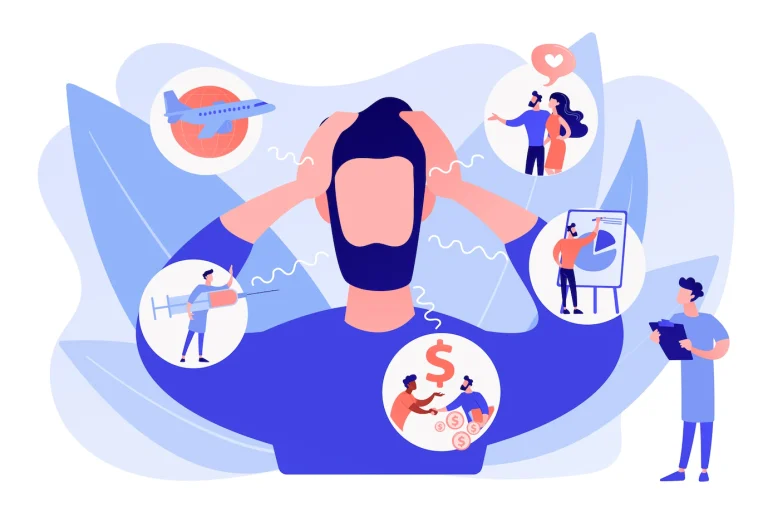Panic attacks are characterized by sudden recurring attacks of overpowering fear that last for several minutes. This usually involves a fear of disaster or losing control, even if there may be no legitimate reason. Due to the spontaneous nature of these attacks, fear is instilled in individuals with panic disorder, as they keep anticipating the next one. Not everyone who experiences panic attacks develops a panic disorder. Most people just have one attack and never experience another one.
Though anxiety is a treatable mental health disorder, it can go undetected for a long time as the physical symptoms can mirror those of other, more serious diseases. Since approximately 50% of patients are diagnosed with depression as well, the initial assessment must be thorough and particularly designed to identify and treat any underlying coexisting morbidity.
Panic disorder occurs without warning and is not triggered by a particular circumstance. The attacks are of sudden onset and can happen often. There are no logical reasons for the panic attacks, they appear without an obvious cause, and the patient exhibits feelings of fear or impending disaster. Although a mental disorder, panic attacks generate physical symptoms and can resemble symptoms of a heart attack. Panic attacks are a life-disrupting disorder affecting work, home life, and relationships.
An attack may happen at any time and is not predictable. If a patient associates an attack with a particular location where the attack occurred, he or she may avoid that location in the future. People live with the fear that another attack will happen at any moment and often exhibit symptoms of agoraphobia, a fear of open spaces, which keeps those with severe symptoms housebound. It is a treatable condition, with a better chance of success if treatment begins in the early stages.
Although the main symptoms consist of panic attacks, these can be debilitating enough to lead to substance abuse and/or depression. The symptoms of panic disorder include:
- Sudden, frequent, and repeated attacks of fear
- Constant anxiety about anticipating the next attack
- Avoidance of areas where previous attacks took place
- Pounding or racing heart
- Sweating
- Breathing problems
- Weakness
- Feeling hot or a cold chill
- Numb hands
- Chest pain
- Stomach pain
- Causes
The cause of the panic disorder has not been discovered. A genetic factor is suspected, as the disorder does run in families. It is thought that the area of the brain that controls fear may be involved or that trauma may be a causative factor. Risk factors include:
- Family history
- Serious illness or death of a loved one
- Major life changes
- Chronic stress
- History of trauma
- Undergoing a traumatic event
Treatments involve medication (anti-anxiety or antidepressants), psychotherapy (cognitive behavioral therapy), or it could be a combination of both. Studies show that patients who received CBT remained free of symptoms for a longer period of time.
Health professionals encourage positive lifestyle changes as part of therapy, such as yoga, meditation, equine therapy, art therapy, a healthy diet, and limiting caffeine and alcohol. The treatment plans involve a balance of all these elements depending on what suits the patient best.

